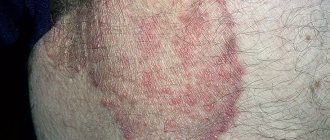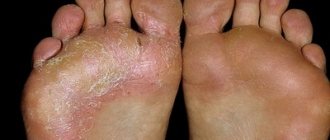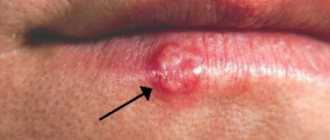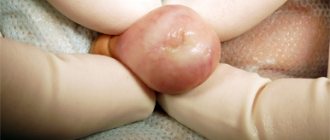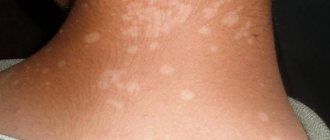Syphilis: symptoms and first signs, how to treat syphilis
Symptoms of syphilis depend on the stage of the disease, age and gender of the patient. The course of this venereal chronic disease may have its own characteristics in each specific case. It is even capable of being asymptomatic for the time being in a latent state.
A distinctive feature of treponema pallidum is its exceptional contagiousness, which is why it is so important to survey the population in order to avoid an epidemic of this disease.
The worst thing is when it has a hidden course and the person does not even realize that he is a carrier of syphilis and poses a danger to his family and others.
How is it transmitted?
Syphilis is caused by Treponema pallidum, which lives in the external environment for only 3 minutes. Therefore, the main route of transmission of the disease is sexual. Infection of the fetus is possible in utero (vertical route) or intrapartum, when the child passes through the mother’s birth canal.
The household route of transmission is uncommon; infection is possible from persons with the tertiary stage of syphilis, when treponema pallidum gets on dishes, linen, towels, etc. from decaying gums. Hematogenous transmission of syphilis through blood transfusion cannot be ruled out.
Cases of infection of medical workers through contact with the blood of a patient are not that rare. It is possible to become infected through “bloody” objects: a shared toothbrush, razor, manicure set, etc.
Syphilis - incubation period
The incubation period is a period of illness that lasts from the moment Treponema pallidum enters the body until the appearance of the first signs of syphilis (see photo), including chancre in combination with regional lymphadenitis. During this period, there is a gradual increase in the number of pathogen cells at the site of their introduction into the patient’s body. Treponema reproduces by division on average once every 30-32 hours.
This period of the disease is characterized by the absence of registered clinical and serological changes in the patient’s body; it lasts on average 3-4 weeks, it can be shortened to 8-15 days or lengthened to 108-190 days. A shortening of the incubation period occurs, as a rule, when the body is simultaneously infected from 2 sources; it is lengthened when taking antibiotics after the moment of infection, for example, for a sore throat, although it should be noted that an increase in the incubation period is not always due to the use of antibiotics.
Treatment of chancroid
When prescribing therapy, it should be taken into account that the sensitivity of Haemophilus ducreyi to antibiotics varies in different geographical regions.
Ceftriaxone is considered the most effective. It is administered once intramuscularly.
Alternative drugs are azithromycin per os, trimethoprim/sulfamethoxazole per os, erythromycin per os for 7 days.
Hospitalization is recommended for patients, as rest prevents the occurrence of lymphadenopathy.
Sexual partners should be treated simultaneously with one of the mentioned therapeutic methods.
Primary syphilis
After the end of the incubation period, the characteristic first symptoms of syphilis appear. At the site of penetration of the treponemas, a hard chancre is formed, a specific round erosion or ulcer, with a hard, smooth bottom and “turned-up” edges. The size of the formations can vary from a couple of mm to several centimeters. Hard chancre can disappear without treatment. Erosions heal without a trace, ulcers leave flat scars.
The disappearance of chancre does not mean the end of the disease: primary syphilis only passes into a latent form, during which the patient is still infectious to sexual partners.
After the formation of hard chancre, local enlargement of the lymph nodes begins after 1-2 weeks. When palpated, they are dense, painless, and mobile; one is always larger than the others. After another 2 weeks, the serum (serological) reaction to syphilis becomes positive, from this moment primary syphilis passes from the seronegative stage to the seropositive stage. The end of the primary period: body temperature may rise to 37.8 - 380, sleep disturbances, muscle and headaches, and joint aches appear. Dense swelling of the labia (in women), the head of the penis and the scrotum in men is possible.
Hard syphilitic chancre - the initial stage of syphilis
The primary chancre at the very beginning looks like a red spot, which over time turns into erosion.
The main signs of hard syphilitic chancre:
- The diameter of the spot on the skin or mucous membrane can reach 5 cm.
- The shape of the spot is oval.
- Education has clear boundaries.
- The color of the spot is red or burgundy.
- Presence of yellow purulent plaque.
Hard syphilitic chancre is never accompanied by pain or itching . Many people simply do not notice it on their body because of this. If you press lightly on the side of the stain, a yellow liquid may come out of it.
Healing of chancre occurs within a month. After this, this formation does not leave any visible marks on the body. But, despite this, it is worth noting that the disappearance of chancre indicates that the disease can take a latent form.
Among women
Syphilitic chancroid in women is a very dangerous venereal disease. Even in the initial stages of its development, syphilis is a serious infection for sexual partners, and at an advanced stage the disease can cause death.
In order for treatment to give any positive results, a woman’s chancre must be identified at the initial stages of its formation.
In men
Hard syphilitic chancroid in men usually manifests itself in the genital area. To be more specific, it affects the head of the penis, the coronary sulcus and the scrotum.
If a man is a supporter of non-traditional sexual orientation, then formations may appear in the anus and mouth. In size, chancre in men can be either miniature or gigantic. Moreover, it is worth noting that the most contagious are the miniature chancre , the diameter of which reaches only a few millimeters.
In another article, we discussed the issue of syphilitic rash on the head in men.
Secondary syphilis
The infection generalizes by 3 months from the moment of infection and lasts 3-5 years, this period is characterized by multiple different-looking rashes in various organs and tissues, and therefore absolutely any symptoms depending on which system/organ is affected more and how much it is affected was previously compromised, that is, was he healthy at the time of the defeat - if so, then the manifestations of syphilis will be minimal.
During this period, there are prodromal symptoms (as with colds - general malaise, pain in muscles, joints, the appearance of fever), they last 7-10 days until the appearance of syphilomas (roseolous-papular rashes) - often these are small red spots with clear boundaries , not merging with each other. When pressed, they disappear, and then appear, or may turn yellow due to the destruction of red blood cells. These rashes do not destroy tissue and, with antisyphilitic treatment, disappear instantly. These rashes are recurrent in nature, that is, they appear again, but are not as pronounced and in much smaller quantities.
Stages of development
Incubation period
The incubation period - from the moment of infection to the appearance of symptoms of the disease - lasts on average from 2 weeks to 2 months, although observations of longer duration are known. It all depends on the state of immunity at the time of infection. Long asymptomatic periods usually occur in people who were taking antibacterial drugs to treat other diseases at the time of infection.
During the incubation period, Treponema pallidum multiplies in the lymphatic system until it reaches a maximum concentration. They then enter the bloodstream and spread throughout the body. At this time, the disease does not manifest itself in any way and is not detected in blood tests, but the person is already infected. Without realizing it, he or she is putting the sexual partner at risk if they have unprotected sex.
Important! Treponema pallidum can reproduce in a small temperature range, around 37 °C. Therefore, to treat syphilis, the method of pyrotherapy is practiced - increasing body temperature. The patient is given drugs that increase body temperature, as a result of which treponema is deprived of the opportunity to reproduce. This method is considered the most effective for nonspecific treatment of syphilis.
Chancre formation
Figure 3. Development of syphiloma.
Source: CC0 Public Domain Once in soft tissue, treponema begins to actively multiply. During this period, a slight increase in temperature and an increase in nearby lymph nodes, which can be palpated, are possible. Inflammation develops at the site of infection - this is how immune cells try to destroy the enemy.
From the outside, the inflammation site looks like a bright pink patch of skin. Then a characteristic dense nodule forms on the skin - the rudiment of the future chancre (Fig. 3). It enlarges, thickens and after a week and a half ulcerates.
If the ulcer is covered with a crust, then the chancre is also called cortical. If you press on it, a yellowish liquid will come out, in which there is a high concentration of treponemes. This type of syphiloma is called “crying chancroid.”
Discharge from chancre is contagious, and contact with it can transmit infection. This danger is especially high when chancre is located in the mouth - there is a high risk of infecting a partner with syphilis even through a kiss.
The formation of chancre indicates the end of the incubation period and the onset of the primary stage of syphilis. Chancre does not bother the wearer with either itching or pain, which is bad - a person may simply not pay attention to it and waste time.
The primary stage is the most favorable for the destruction of the pathogen. During this period, a complete and rapid recovery is possible with timely administration of antibacterial therapy. In the future, coping with the disease will become more and more difficult.
Healing chancre
An ulcerated chancre lasts 6-7 weeks, then healing begins. Erosion can pass without a trace, but sometimes it leaves a dark pigment spot. When the ulcer heals, a scar remains. A few days before the chancre disappears, profuse itchy rashes may appear on the body.
At this stage, syphilis enters the secondary stage.
Important! Healing of chancre is often mistaken for recovery. This is wrong. In fact, the disease continues to develop, spreading throughout the body.
What is the difference between soft chancre and hard chancre?
There is a chancroid similar to hard - soft chancre (chancroid). It, like syphilis, is sexually transmitted, but occurs due to infection not by Treponema pallidum, but by bacteria of the genus Haemophilus influenzae.
Chancroid differs from hard chancroid in the following ways:
- there is no hard cartilaginous base (that’s why chancroid is called “soft”)
- the edges of the ulcer are not hard, but soft, spreading
- characterized by copious discharge of pus
- painful
- color hot pink, red
Tertiary syphilis
Tertiary syphilis is characterized by a long latent course. It can appear after 3-4 years (with complete absence of treatment, or with insufficient treatment). Most often, this form of pathology can be found in patients suffering from chronic alcoholism, tuberculosis or other infections.
During this period, a small amount of dense infiltrates, localized in the subcutaneous tissue or in deeper tissues, is found on the patient’s skin and mucous membranes. After some time, they disintegrate, and in their place painless ulcers appear, which scar only after a few months or years. It should be noted that such syphilides are not accompanied by subjective disorders and do not disturb the general condition of the patient. They contain very little pathogen, and therefore are practically non-contagious.
Atypical form
Primary syphilis is characterized by the appearance of an atypical form of hard chancre.
Atypical hard chancres have a number of features:
- Formation of syphiloma , which are distinguished by their compaction. It differs from ordinary edema in that after pressing on the formation, the presence of pits is not observed on the body.
- Amygdalitis is a chancre formation that is painful and located in the human throat. Amygdalitis is very easy to confuse with ordinary sore throat. But it differs from tonsillitis in the absence of fever and enlargement of only one tonsil.
- Chancroid felon is characterized by a purulent process that appears on the tips of the fingers. This type of chancre is accompanied by the presence of severe pain and even fever.
- Syphiloma-herpes. With this type, the head of the penis and the inner layer of the foreskin become inflamed.
Atypical forms of chancre create serious diagnostic problems. They are also capable of causing serious complications aimed at blood circulation and tissue trophism.
Congenital syphilis
It is transmitted from a sick mother when treponemes penetrate the placenta into the fetus. Syphilis infection can occur both during conception and much later. Regardless of the time of infection, pathological tissue changes are observed only in the VI-VII months of pregnancy, so active prevention of syphilis in the early stages will help give birth to a healthy child.
The possibility of transmitting pathogens through the father's sperm has not yet been proven, so all preventive measures usually concern the expectant mother. These include: identification of sick women in the early stages, full registration of pregnant women, monitoring the treatment of infected persons. In order to prevent the development of negative changes, mandatory regular examinations of pregnant women are carried out for the presence of treponemas and external signs of congenital syphilis.
Features of syphilis symptoms in men and women
The secondary and tertiary periods have almost the same symptoms. Differences in symptoms for men and women are present only in the primary period, when chancre appears on the genitals:
- gangrenous chancre on the penis - there is a possibility of self-amputation of the distal part of the penis;
- chancre on the cervix. Signs of syphilis, when hard chancre is located on the uterus in women, are practically absent and can only be detected during a gynecological examination;
- chancre in the urethra is the first sign of syphilis in males, which is manifested by discharge from the urethra, a dense penis and an inguinal bubo.
Types of syphilitic chancre
As a rule, syphilitic chancre is divided into the following types, which differ in symptoms:
- A giant chancre most often forms in a place that is characterized by abundant fatty tissue under the skin. The size of such a chancre can reach the size of a child's palm.
- Dwarf chancre is distinguished by its size, which can reach the size of a poppy seed.
- Diphtheritic chancroid is distinguished by the fact that its surface is covered with a gray film, similar to diphtheria. This type is quite common.
- Cortical chancre forms in those areas of the body where discharge easily dries out (nose, lips, face).
- A slit-like chancre looks like a crack. Most often, this type forms in the corners of the mouth, between the fingers and in the anus.
You might be interested! Hemangioma in children: causes and methods of treatment
Diagnostics
Syphilis is diagnosed by examination, characteristic signs and laboratory tests:
- Examination by a dermatovenerologist. He asks the patient in detail about the course of the disease, examines the skin, genitals, and lymph nodes.
- Detection of treponema or its DNA in the contents of gummas, chancre, syphilides using dark-field microscopy, direct immunofluorescence reaction, and PCR.
- Instrumental studies: search for gummas using ultrasound, MRI, CT, X-rays, etc.
- Carrying out various serological tests: Non-treponemal - search for antibodies against treponema membrane lipids and phospholipids of tissues destroyed by the pathogen (Wassermann reaction, VDRL, rapid plasma reagin test). The result obtained may be false positive, i.e. show syphilis where there is none. Treponema - search for antibodies to Treponema pallidum (RIF, RPHA, ELISA, immunoblotting, RIBT).
Remember that for such a serious disease you cannot diagnose yourself “on the Internet” by reading about syphilis and its symptoms. The fact is that the rash and other changes can visually copy those of completely different diseases, so that even doctors are periodically misled.
Consequences of syphilis
If left untreated, syphilis gradually spreads throughout the body and affects more and more healthy tissues and organs. Sometimes there is temporary relief, after which the patient’s condition sharply worsens. Complications of syphilis depend on its stage.
Primary syphilis can be complicated by the following conditions:
- tissue necrosis at the location of the chancre;
- balanitis;
- phimosis;
- paraphimosis
With secondary syphilis, the following complications are noted:
- damage to internal organs by syphilis;
- damage to the nervous system;
- bone damage.
Complications of tertiary syphilis are:
- damage to internal organs;
- brain damage;
- Treponema damage to the tissues of the neck and face;
- pathological fractures of bones when they are affected by syphilis;
- bleeding as a result of vascular rupture.
How to treat syphilis?
The treatment of syphilis is approached in a comprehensive manner, taking into account many individual factors (age, gender of the patient, stage of development of the disease, the presence of concomitant diseases, general condition of the body, etc.). In addition, all sexual partners of the suspected patient should also be examined for the presence of syphilis and, if necessary, undergo a course of therapy.
If a patient has primary syphilis, then everyone who has had sexual intercourse with him over the past three months must undergo examination and tests. In the case of secondary syphilis - everyone who had contact with the patient over the past year. The timeliness of the therapy itself, as well as the correct selection of modern medications, is important for achieving success in the treatment of this disease.
The most effective method of treating syphilis is the introduction of water-soluble penicillins into the body. This therapy is carried out in a hospital setting for 24 days with injections every 3 hours. The causative agent of syphilis is quite sensitive to penicillin antibiotics, but there is a possibility of an allergic reaction to these drugs or the ineffectiveness of such therapy. In this case, penicillin is replaced with drugs of the tetracycline, macrolide, and fluoroquinolone groups. In addition to antibiotics, natural immune stimulants, vitamins, and immunostimulants are also indicated for syphilis.
Treatment of donovanosis
Antibiotic treatment is very effective. This is why the incidence of this classic sexually transmitted disease is very low in developed countries (about a hundred cases per year are reported in the United States), in contrast to underdeveloped regions where the availability of antibiotics is limited.
Treatment is usually with the following antibiotics:
- sulfamethoxazole trimethoprim (Sinersul) orally for 14 days;
- doxycycline (vibramycin, chiramycin) per os for 14 days;
- azithromycin (Sumamed) orally for 7 days;
Although improvements in the condition appear after the first week of taking antibiotics, treatment should be completed completely to reduce the number of relapses.
Effective preventive measures include:
- avoiding sexual contact with people at risk, especially in endemic areas;
- preventive testing for sexually transmitted diseases.
Prevention
Standard preventive measures include avoiding casual sex, using condoms, and to prevent occupational syphilis, wearing disposable latex gloves before examination, manipulation and surgery.
Condoms are not 100% protection - the chancre can be located extragenitally (pubis, perineum), and with secondary syphilis, a “necklace of Venus” is formed on the skin. In these cases, the infection from syphilis is transmitted by contact to the partner’s skin.
With syphilis, lifelong immunity is not formed. Having successfully recovered from this disease, you can become infected and get sick again. In this case, the disease will be just as severe. Therefore, there are no vaccinations against syphilis, and there cannot be.
Forecast
It all depends on the stage of development of the disease and the treatment method. If therapy was started in the early stages of the disease (primary, secondary and early latent syphilis) and is carried out using treponemocidal antibiotics, then in almost all cases without exception, a complete clinical cure occurs, and relapses of early syphilis and the occurrence of late forms of syphilis are prevented.
Treatment of syphilis in pregnant women in the first half of pregnancy in most cases guarantees the birth of a healthy baby. In the case of congenital syphilis, the prognosis is favorable if treatment of the disease was started in a timely manner. Treatment of later forms of the disease is less successful, since it only slows down the progression of the disease, but in all cases it can restore the impaired function of the affected organs and lead to negative serological reactions.
